On Mandalas, Music, and Color as Therapy for Depression
Looking back at five more contributions to the Mandalas for Marinke project that raised awareness about depression, suicide, and crafting as therapy.
As I shared recently, the 2015 Mandalas for Marinke collaborative crochet art project to raise awareness about depression, suicide, and crafting to heal is one of the projects I’m most proud of. And I believe its message matters, so I’m sharing some portions of it this year - mostly on Instagram but also here. You’ll meet the crafters, read their words, see the mandalas, read a variety of depression/mental health information and learn how it all relates to the work I’m doing today.
Meet the Makers
In this section, you’ll meet the five makers who contributed these crochet mandalas to the original project along with their own words if they shared them …
These mandalas were crocheted by Karen Kidd from Overland Park, Kansas, who has been crocheting for nearly fifty years
Karen shares:
"Wink is an inspiration to me. I worked for 42 years as a psychiatric nurse. In that span, I worked with many patients who suffered from debilitating depression and recurring suicidal thoughts. Wink's blog impressed me because she not only shared her struggle with depression in her blog, but also used it as a forum to show how crochet helped her cope with her depression. I think it takes great courage to share intimate information about yourself to the world. But I think she showed even greater strength and determination to try to research and share ways to fight depression through creative outlets. Wink was very wise for her age. I admire her and I will think of her whenever I make one of her patterns."
She also shared about the mandalas she sent in…
"I made small mandalas like this and did my own 'yarn bombing' in memory of Wink. I posted them in libraries, a college, grocery stores, and yarn shops. The following is the note that I attached to each mandala:
Wink was a talented crochet artist and blogger. Her work was known worldwide. The Mandala, or circle of life, like the one displayed here, was one of her favorite motifs. Wink suffered from clinical depression and last week committed suicide. She was 31 years old. She will be missed. If you need help with your depression, help is available. We need you all in the circle of life".
She also included the local and national suicide hotline numbers. The national number is 1-800-273-8255. You can now also simply dial 988.
This special crochet mandala comes to us from a different Karen at The Shtick I Do who shared:
"I am a stay at home mom of 4 grown / teen children, nana to one beautiful grandson with another on the way! My husband is very patient with my yarn hoarding and encourages me in everything I do. He is my Knight in Shining Armor."
This crochet mandala contribution comes to us from blogger, crafter and photographer Charissa
of the Joyful Four blog, which is no longer an active blog. Charissa shared on her blog back then that this was made “In honor of an amazing talent the crochet world has lost….” and added in her mail, “Sadly, the crochet community lost an amazing talent. You will be missed Wink.” It’s true. She was missed and continues to be missed.
This terrific crochet mandala contribution comes to us from Alessandra Hayden of Just Be Happy.
She is a terrific crochet designer originally from Brazil who is now a SAHM of 2 here in the United States. Her designs have been published widely in craft calendars and magazines, on her own blog and through Ravelry. She wrote a book about tapestry crochet that I had the chance to review and interview her about.
This mandala was from Gayle A, a full time caregiver who advocates for mental health.
Her daughters live with mood disorders. She writes about her family’s experiences with mental health on the blog Out of a Great Need, which is subtitled A Mindful Approach to Traditional Caregiving Through Severe Mental Illness.
She shared the message:
“We came to know Marinke through her love of color and her generous spirit. She was inspirational and made such a difference in so many lives.”
Gayle wrote in her own post about Mandalas for Marinke:
“Clinical depression is not a failure in character…it is the result of compromised brain chemistry…period…and what a difference she made in the lives of so many despite living with a severe mental health disorder.”
I think it’s important to note that there can be a wide range of factors that cause/exacerbate clinical depression. There is new debate about the brain chemistry model. I know that for me, personally, meds help and so there’s something chemical there. But I also believe it can be many other things including trauma, spiritual crisis, loneliness … that said, I absolutely agree that it’s not a failure in character. It’s not a failure of any kind.
Resources, Quotes, Inspiration … Raising Awareness About Depression and Suicide
One major purpose of this project was to raise awareness about depression, suicide, mental health, and crafting to heal. At the end of each original blog post, I shared a quote, a resource, or related information. Here is what I shared from each of the five posts above.
On Mandalas as Therapy …
Fun Fact: Psychotherapist Carl Jung did paintings and sketchings of mandalas for several years and observed their beneficial use among his patients (which included patients with depression, of course). He found that mandalas heal us. Cathy Malchiodi PhD, LPCC, LPAT writing for Psychology Today shares:
"According to Jung, mandalas symbolize "a safe refuge of inner reconciliation and wholeness." They have the potential to call forth something universal within, perhaps even the proverbial archetypal Self. And at the same time, they give us an experience of wholeness amid the chaos of every day life, making the "sacred circle" one of the very coolest art therapy interventions for both soothing the soul and meeting oneself."
I also wanted to share this video by Deb GypsyOwl Bryan who writes,
"As I began my journey out of depression, I needed a way to focus. And I was sure art therapy works. A string of events (which had been in progress since at least the end of November) put a tiny smartphone in my hands and an app which allowed me to create mandalas."
On Color As Therapy …
Wink would do weekly posts where she would share a photo that was her color inspiration and then a mandala she created with that inspiration. Here’s an example:
Wink often mentioned that she was enjoying color therapy and yarn therapy through her crochet. She wrote in the post for the above mandala,
“If this isn’t colour therapy, I don’t know what is! I get happy just looking at this mandala”.
Several weeks prior to making this mandala, she had made a different mandala about which she wrote, “Seriously, this mandala is pure color therapy for when you’re feeling cold!” You can tell that making crochet mandalas was really healing for Marinke on so many levels. Color therapy was one way it helped.
The colors that we surround ourselves with stimulate us in different ways. Maker Gayle has a post on Out of a Great Need sharing how she and her daughters use color in their lives. The Recover Depression blog had a post about color therapy that explains its history and shares the chart below along with more detailed information about the common impact of some colors:
Something else that is important to know is that people experiencing depression may have a decreased perception of color. In a 2010 article on the topic, Jessica Ward Jones, MD, MPH cited,
“Recent research published by Dr. Emanuel Bubl of the Department of Psychiatry and Psychotherapy at Albert-Ludwigs-University of Frieburg in Germany, and his colleagues, showed that the retinas of depressed patients were less sensitive to contrast.”
Music Therapy to Treat Depression
In a small clinical study published in 2011, “Researchers found that adults who were given music therapy sessions, in which they played drums or instruments such as xylophones, showed fewer symptoms of depression or anxiety than those who just had standard counseling.”
Another study a few years before that found that “listening to music can reduce chronic pain by up to 21 per cent and depression by up to 25 per cent”. So it seems that both making and listening to music can be healing for people with depression.
The American Music Therapy Association has found that music can also help people on the autism spectrum. Marinke had Asperger’s and is an example of someone who found music helpful, whether or not she engaged in a formal music therapy practice. She shared this on her blog in 2011:
“I love music. I play like 13 different instruments and used to own even more! Sadly I had to get rid of some of them because of the space issue, but I still own (and would NEVER get rid of) my first love, the flute, an acoustic guitar, an electric guitar and a couple of other wooden flutes & recorders and tin whistles.”
Many of the benefits of music therapy are similar to the benefits of crafting for depression. It is the act of creative expression, the focus of the mind on a positive outlet, the creating within community that all come together to provide benefits that can help reduce the impact of depression. Music therapy also touches parts of the brain that we don’t access through words or other forms of therapy. Therefore, it can help when talk therapy or other options for treating depression don’t seem to be useful.
On the Faces of Depression
Let’s talk about the faces of depression. I want to highlight something that Jillian Capewell wrote in her article 6 Things a Woman With Depression Wants You To Know where she makes the point:
Putting on a happy face in public doesn’t mean we’re “faking it.”.
She adds: “people with depression don’t look like glum cartoon frowny faces, or spend their days sighing and staring out of rainy windows. We contain multitudes, man — some days, or months are easier than others. Most of the time I come off as a happy and sociable person, because that’s the version of myself that I want to project to the world.“
Many people online have mentioned that Wink seemed so happy in her blog and that they didn’t realize she was dealing with depression. I thought it was important to highlight this point that often we aren’t faking it when we are presenting as happy to the world, in person or on our sites. Sometimes we’re presenting our best side, sometimes we’re presenting the way we wish we are, sometimes we’re finding a moment of happiness in the midst of the darkness (which is what I suspect Wink was doing when she posted small moments of joy like her Instagram of wearing flowers in her hair). Depression is complicated.
There are many faces of depression. Learn the warning signs and symptoms. However, don’t assume that you can always see depression from the outside. If you think someone you know may have depression, don’t be afraid to ask them how they are feeling. Let people know you are there for them, regardless of how they appear on the outside.
Celebrities Who Have Died by Suicide
I thought I’d share a (very partial) list of some of the amazing creative talents who lost the battle to depression and suicide. This isn’t to glorify or romanticize the illness but instead to recognize how widespread this condition is. Suicide and depression affect people of all ages, from all areas, of any class.
Alexander McQueen
Anne Sexton
Anthony Bourdain
Brad Delp
Chris Cornell
David Foster Wallace
Diane Arbus
Elliott Smith
Ernest Hemingway
Etika
Hunter Thompson
Isabella Blow
Jonathan Brandis
Kate Spade
Kurt Cobain
Mark Rothko
Michael Blosil
Mindy McCready
Phil Ochs
Robin Williams
Stephen ‘tWitch’ Boss
Virginia Woolf
Additionally, here is a lengthy list of famous people who attempted suicide but survived. Slightly more inspiringly, here is a list of 40+ celebrities who have lived with depression. Depression affects people far and wide, from all walks of life, for many different reasons. Whether they are famous or not, the world loses out when people are lost to suicide.
Art and Mental Health Takeaways
Mandalas for Marinke came out of the 10+ years I spent studying crochet as therapy, which evolved into the work I do now, which looks at all art as therapy and catharsis but also at the shadow side of how mental health impacts creativity. I wanted to look back at these original posts with an eye towards the related takeaways:
Despite that it’s only really been studied in recent years, a diverse array of people know that craft heals - including in just this roundup, a psychiatric nurse, a mother-caregiver, and crochet designers/bloggers/artists.
The mandala has been utilized for healing in a wide range of different ways in art and spirituality.
Depression can literally take color out of your life. I experienced this myself, something I shared in Crochet Saved My Life because when I started choosing yarn colors, I started actually seeing color again in my world.
Color therapy is valuable and helpful but it’s also complex. There are simplified ideas about how color impacts mood that we can use as a starting point. However, color is very personal.
You can’t see depression. It doesn’t have a specific look. People can look “fine” and that doesn’t mean that they’re faking wellness. People are complex.
Many famous people have died by suicide. These people are often creatives - actors, artists, musicians. This doesn’t mean that being creative leads to suicide or that being famous leads to suicide, of course. It means that there’s a complex relationship here and my work is in exploring the nuances.
Music provides therapeutic release not only when you’re creating it yourself but also when you are simply listening to it. In my research, I explore the healing power of simply experiencing art. And this means that when you create art, you may be helping someone who experiences it later.
You never know your ripple effect in the world. Marinke inspired so many people with her creativity and her fight against depression. We could view her as having lost the fight … but maybe longevity isn’t always the point.
If you read this far, perhaps you liked the work. The work does take work. It only continues with support, so please consider subscribing. My annual rate starts at $10 per year.

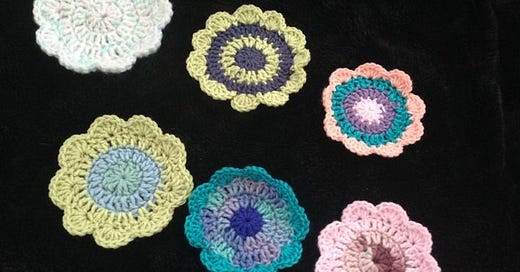




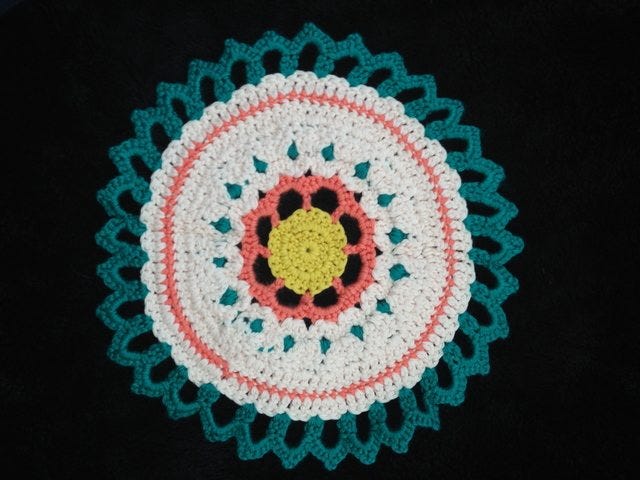


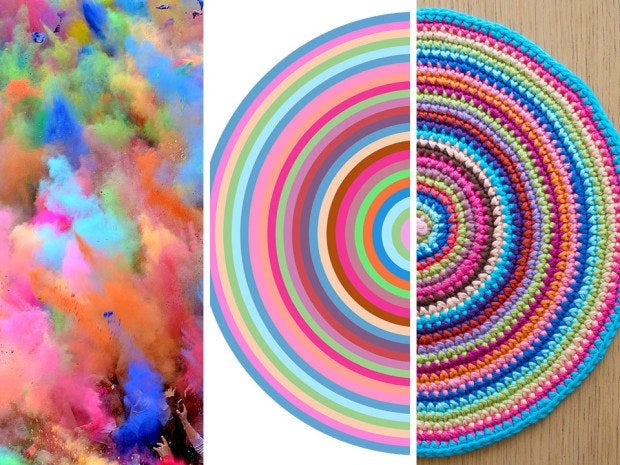
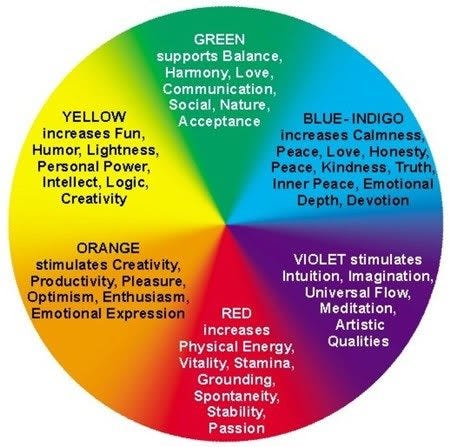


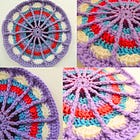
I had the privilege about 10 years ago to see some of the Carl Jung original mandalas and his work.
They truly do help. I incorporated the practice into my life 20 years ago and it's been the gift that keeps giving.
A life without music is not a life.